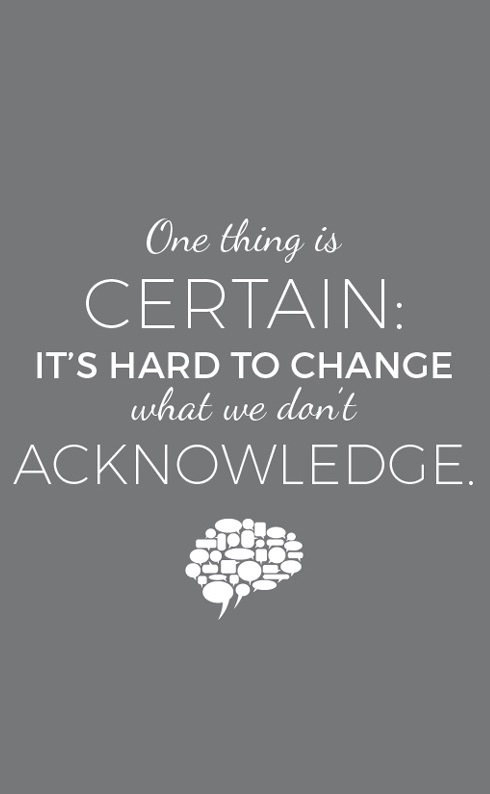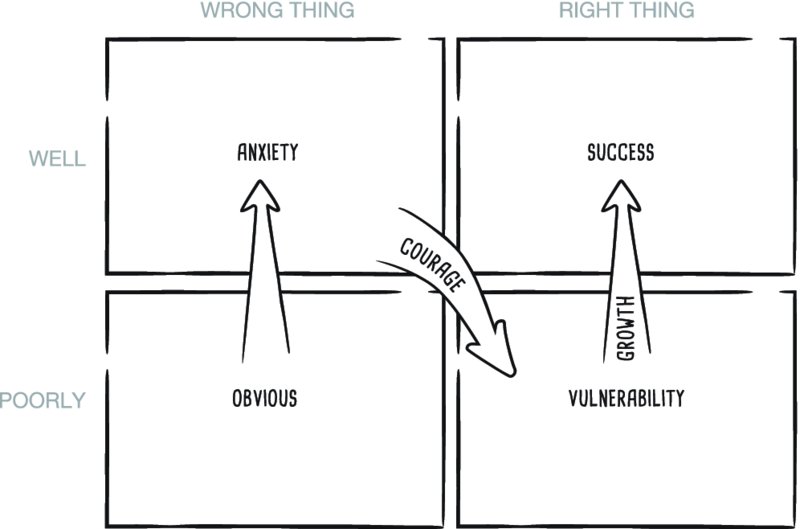1
What's your tough stuff?
Getting clear on what's tough for you
Leadership can be a lonely place at times. Sure, there are few experiences more enjoyable than leading people towards great outcomes for both themselves and your organisation, but then there's the other side of leadership. There are the times when you won't see eye to eye with others. Conflict is inevitable. That's when the loneliness of leadership truly presents itself. It certainly is a tough gig being responsible for dealing with the tough stuff.
It's worth taking the time to be clear on what the tough stuff is for you: those key work conversations that you have to have and that you would like to be better at. What are they for you?

Each of us has a unique set of skills, abilities and experiences that we bring to any tough conversation. What's tough for one person may not be tough for another. Having the personal insight into which situations are particularly tough for you will help guide you towards making relevant changes in your behaviour. One thing is certain: we can't change what we don't acknowledge.
Finding out your tough stuff
To be able to prioritise what requires the greatest attention for improving results in your key conversations, rate yourself on the following questions and their corresponding continuums (see figure 1.1, overleaf).
Your answers to these seven questions will give you greater clarity on which tough-stuff situations you have strengths in, and which areas may need some attention. When you identify these areas to work on, you may be tempted to turn away from them because in the past you possibly avoided these situations. We urge you not to slip into old habits but to instead take the courage to change your approach.

Figure 1.1: rate your tough stuff
Vulnerability is the pathway to growth
As you move through the process of dealing with the tough stuff, at some point you will face a state of vulnerability. It's inevitable, and you should welcome it because it will set you on the road to success. Vulnerability is the readiness to take risks, to change behaviours and to do the ‘right' thing, even in the face of uncertainty. Vulnerability is being okay with getting it wrong and making mistakes, particularly in front of your colleagues and co-workers. It's the courage to step up and try something that you believe is the right thing for your team, organisation and customers, even when you're unsure of what the outcome may be.
In a Harvard Business Review blog, Thomas J. DeLong, Professor of Management Practices at Harvard Business School, suggested that vulnerability plays a powerful role in behavioural change, both at an individual and at an organisational level. DeLong outlined a matrix that offers four options for performance. We have adapted DeLong's matrix to suit your individual process as you move through changing your behaviour and helping other people to change theirs (see figure 1.2, overleaf).

Figure 1.2: the vulnerability matrix
The vulnerability matrix is a simple quadrant model that provides four options for performance. In the column on the left, you have the opportunity to do the wrong thing well or the wrong thing poorly. And in the right-hand column, you have the choice to do the right thing well or poorly.
You will also notice that the bottom left quadrant is labelled ‘Obvious'. Generally speaking, when we do something poorly and it isn't right for us it presents itself quite clearly as something that obviously needs to change.
The top left quadrant (doing something well that's not right for us) represents something that human beings can put up with for a very, very long time. Contrary to Sigmund Freud's main theories, people don't necessarily move away from anxiety: many can put up with it for years. Although we can be resilient in the face of anxiety, the cost can be considerable to our mental and physical states, as well as our relationships.
As with most quadrant models, most people aspire to be in the top right section, since doing the right thing well is assumed to lead to significant achievement. It makes sense that we would aim to master a skill and deliver it when needed. The challenge is making it to this quadrant. But as DeLong states, ‘The only way to get there is through the bottom right quadrant. The only way you can do something well is to do something poorly first. There's no other way'.
We don't entirely agree with DeLong's absolute belief that the only way to reach the top right quadrant is through doing right things poorly (bottom right quadrant), as there are rare cases of naturals who don't have to achieve growth through failure. Some people just get it. But they're the minority, and the majority of us generally pay a toll for mastery through having to do the right thing poorly at least a few times.
Vulnerability is hard; doing things poorly is a risk. The easiest thing to do is continue doing the same thing you have always done and not allow yourself to be vulnerable. The problem with doing what you have always done is that you'll only achieve what you've always achieved. It's a much tougher option to actually change what you're doing: to try something new, such as a new direction, a new strategy, new technology, a new mindset or attitude, or even to have team meetings in a different location (sometimes the small changes can make a big difference). To change and know that, at first, things will feel weird and uncomfortable and that you'll feel a little vulnerable, is difficult. But it's the choice to move away from doing the wrong things well and towards doing the right things poorly that leads to the greatest reward.

Unfortunately, most managers, supervisors and leaders in our organisations are reluctant to try something new for fear they will look silly, hesitant or even awkward. So a defensive mindset kicks in. They regress. And the result? They stick with what they know at the expense of taking risks, stretching themselves and being innovative. Our research shows that few people who focus on achievement, goals and outcomes (particularly short-term wins) would willingly entertain the idea of doing the right thing poorly. But to do so is to embrace vulnerability.
Your level of anxiety in embracing change is important to acknowledge, but you need to move your thinking towards embracing vulnerability rather than running away from it. Without being brave enough to take a risk, you won't get to this lower right quadrant. The reward is progressing to the upper right quadrant, to success and growth. That's where we play the game we really want to play — and play it well.
Moving away from doing the wrong thing well to doing the right thing poorly takes a huge amount of courage. In advance, congratulations for taking this significant step.
Conclusion
Being able to deal with the tough stuff starts with getting clear on what the tough stuff is for you personally. Knowing which conversations you may be avoiding at times but would like to be better at will bring a greater awareness to what you can change in these situations. Once you have some clarity about which key conversations you find tough, it's important to start being comfortable with being vulnerable. Taking the courageous step to changing your behaviours will be the pathway to growth and success.